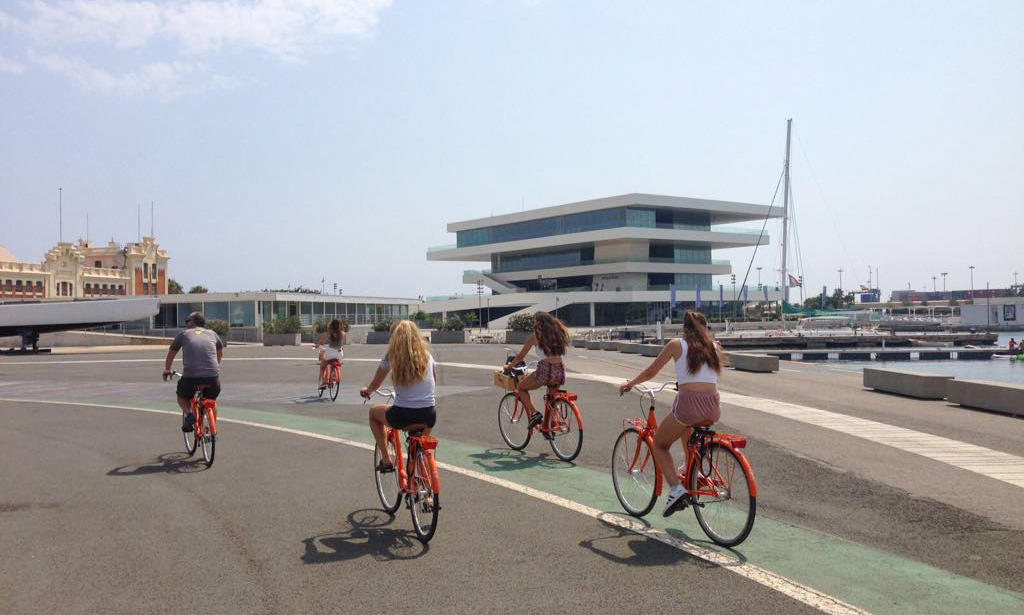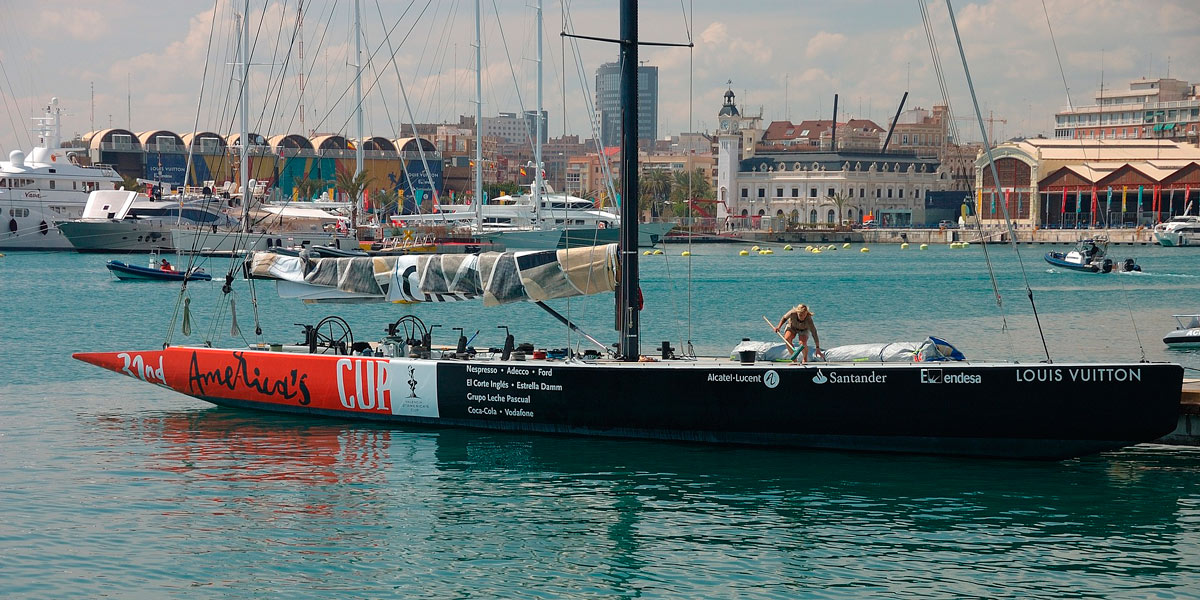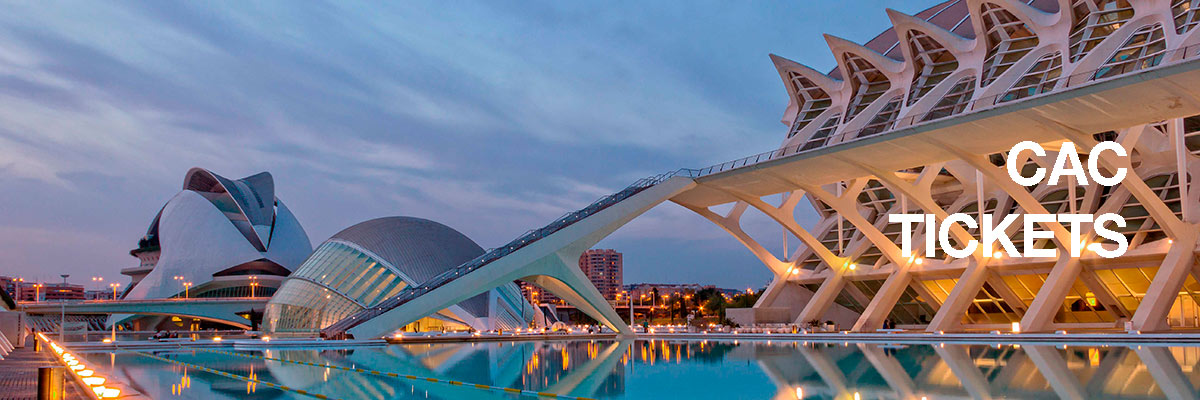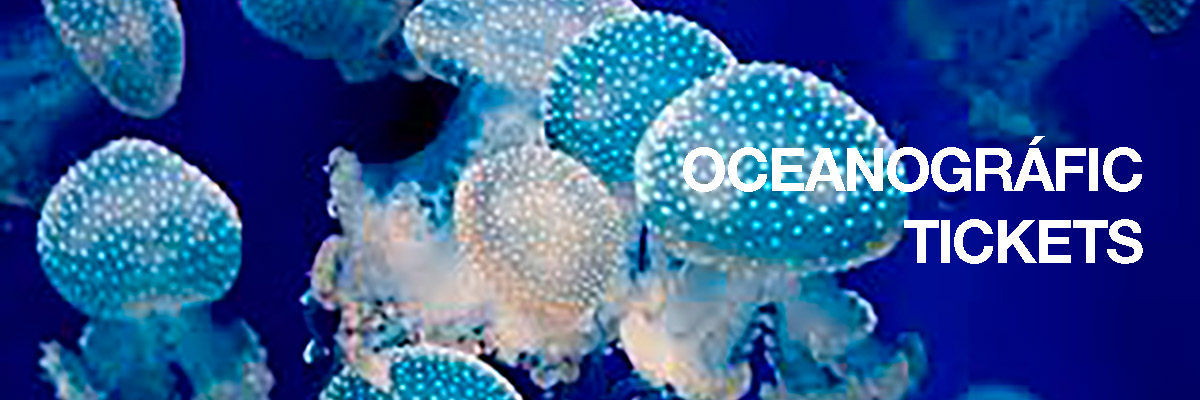In fact, in the historic centre of Valencia there are even millennial ruins as soon as we raise a bit of land. I'm sure we have incredible treasures under our feet that would explain many things we don't know, but it's very likely that we'll never see them and that we'll only imagine them from other discoveries.
We want you to discover Valencia on our bicycles, to reach small corners yourself, to spend as much time as you like in each monument or museum. We can help you with our guided tours, of course, but we would like that to be just a starting point, a contact, so that you yourself can enjoy an open and joyful city, with many charming places.
This selection of museums and monuments will hopefully help you plan your trip and prioritize them according to your own tastes.
![]()
ART MUSEUMS AT VALENCIA
The MUSEUM OF FINE ARTS ARTS SAN PÍO V is considered the second art gallery in Spain for its extraordinary collection and its magnificent exhibition. In some periods, some even say that it could be the first. It is an essential museum for any lover of art and history and, in addition, is very well organized. The visit is very enjoyable and it may be a good idea to arrange the visit so that you can have a drink there and make use of the museum's good bar.
You will surely pass through EL ALMUDÍN when you visit the Cathedral, the Plaza de la Virgen or La Almoina, so we recommend that you visit this beautiful Gothic building and see the temporary exhibition that there is at that time. They are all highly recommended and the building is worth it.

If you like Contemporary Art, Valencia has some of the best museums that you will enjoy. The first, very close to our shop, would be the INSTITUT VALENCIÁ D'ART MODERN (IVAM), which holds extraordinary temporary exhibitions, in addition to having enviable collections of paintings, sculpture and photography, and even a magnificent library.
A few meters away is the CENTRO DEL CARMEN, a fantastic museum with high quality temporary exhibitions and many cultural activities. Located on top of a convent built in 1281, it is one of the visits that we recommend to any traveller because, in addition to a more than pleasant environment, the exhibitions never leave you indifferent.
The CHIRIVELLA SORIANO FOUNDATION is much smaller and just a few metres from our shop. It always has very attractive art exhibitions in an old Gothic palace. The BANCAJA CULTURAL CENTRE, on the other hand, is an authentic reference point for temporary exhibitions with worldwide impact. We recommend that you consult the exhibition calendars of these centres and assess your interest in each case.
Also very close to our shop is the VALENCIAN MUSEUM OF ILLUSTRATION AND MODERNITY (MUVIM) which holds exhibitions on illustration, design, photography and other arts, always temporary and always magnificent. It also has a model of 17th century Valencia that is a marvel.
OTHER MUSEUMS IN VALENCIA
The building of the COLEGIO DEL ARTE MAYOR DE LA SEDA, which was an essential institution in the Valencian silk industry and has been at the forefront of Europe for centuries, has recently been restored. There is now a very interesting museum right next to the MUVIM and 150 metres from our shop.
Behind the Cathedral and the Plaza de la Virgen is the ARCHAEOLOGICAL CENTRE OF THE ALMOINA, which is located in what was once the forum of Roman Valencia. It is a very pleasant and well organized archaeological interpretation centre that shows the Valencia of the time of its foundation and that of its rebirth after the destruction of the city by Pompey, followed by other times. We highly recommend it.
Just a few steps away we can visit the CITY MUSEUM in the beautiful palace of the Marquis de Campo and, inside the Cathedral, the CATHEDRALIC MUSEUM, much more than a museum of religious art. Near BIOPARC, next to the Parque de Cabecera, is the MUSEUM OF HISTORY OF VALENCIA which, in a building of great architectural interest, contains elements from the different periods of Valencia from its foundation to the present day.
Next to the IVAM is the CULTURAL CENTRE OF THE BENEFITS which houses two high level museums, the MUSEUM OF ETHNOLOGY and the MUSEUM OF PREHISTORY.
Among the Gardens of Los Viveros is the MUSEUM OF NATURAL SCIENCES which, in a very organized way, shows us an incredible collection of fossils and skeletons of missing animals, among other things, which tend to have a special impact on the youngest. And continuing with the theme, we have the very interactive and fun PRINCIPE FELIPE SCIENCE MUSEUM, the HEMISFÉRIC and the OCEANOGRAPHIC, all of them in the whole of the City of Arts and Sciences.
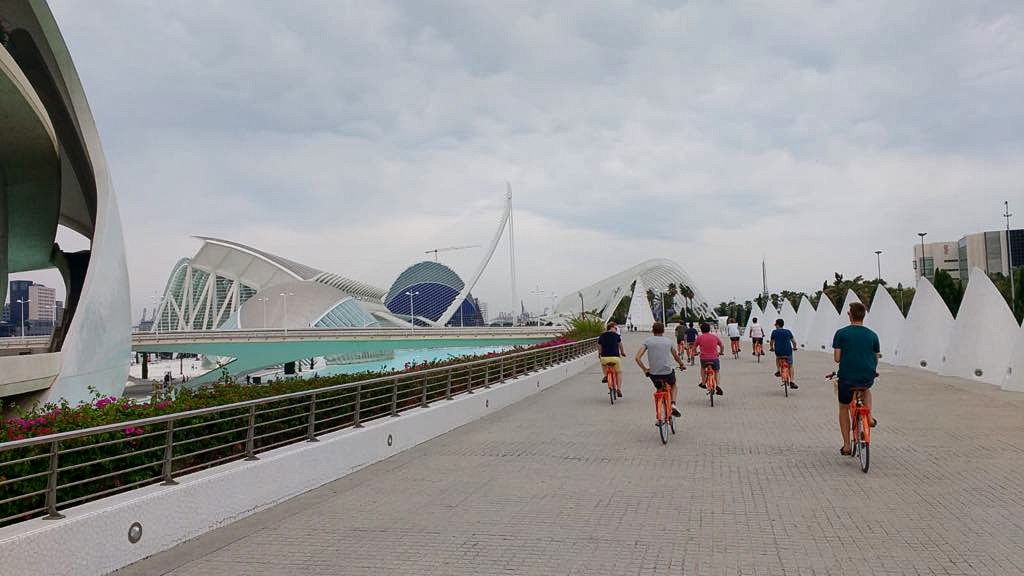
CURIOUS AND SURPRISING MUSEUMS
In Valencia there are many other museums that are very different from each other and that are of undeniable interest to both Valencians and visitors.
Possibly one of the most impressive would be the one known as CASA DE LAS ROCAS (House of the Rocks), which for centuries has hosted all the elements of the legendary Corpus Christi festival in Valencia. It is next to the Serranos Towers. Just a few metres away is the CASA DE BENLLIURE, which is very interesting because of its content and because it perfectly revives the way of life of one of the most universal artists in Valencia.
Without leaving the historic centre there is a peculiar museum that houses the world's largest collection of lead soldiers and other figures. This is L'IBER in the street Caballeros. And if you want to collect, we have the extraordinary MUSEO NACIONAL DE CERÁMICA GONZÁLEZ MARTÍ which is located inside the magnificent PALACIO DEL MARQUÉS DE DOS AGUAS, which is sure not to be missed during your visit.
In the area of the City of Arts and Sciences you have the FALLERO MUSEUM, which shows an unknown world to visitors to Valencia who have not seen the Fallas fiestas in March. And if we go from there towards the sea, we can find some other museums such as the MUSEUM OF RICE (with all the culture around it) and some pedalling further on, facing the sea, the magnificent HOUSE OF BLASCO IBÁÑEZ, a world-famous writer who had a great impact on Valencian life between the 19th and 20th centuries. His house-museum is worth a visit.
Next to the bullring is the BULLFIGHTING MUSEUM, undoubtedly one of the best in Spain on the festival of bullfighting.
OPEN-AIR MUSEUMS: VALENCIA, THE CITY OF STREET ART
In Valencia there are many true works of street art, what has come to be known as "street art", with the particularity that it is not necessary to use a map to find them as in other cities. Here they are accessible and found by surprise in many corners of the city.
They are available for all tastes and with a wide variety of techniques: with a brush, with spray, with templates, on canvas, on walls, in science fiction, with a vintage look, in comic strips,... and among them there are artists of international renown.
It is not strange to see how travellers visiting Valencia go in search of the best known ones to take with them on their cameras.
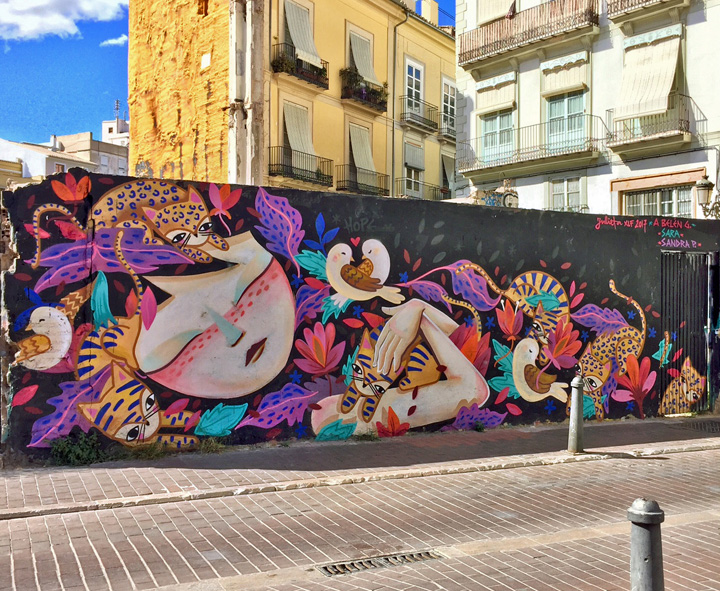
![]()
MOST INTERESTING MONUMENTS IN VALENCIA
The most monumental area of Valencia is concentrated mainly in what we call the Historic Centre, which would be all that remains within the old Christian wall. However, there are also important monuments outside this area, although they are already more localised, a little further away from the density of the historic centre.
The historic centre is said to be the largest in Europe (these things are always difficult to measure) but it is still very easy to get around, especially if you ride a bicycle. Don't worry if you get lost or deliberately walk away from what you had planned. You will find a new route that will take you to the places you left behind without much trouble.
To help you visit Valencia in a certain order, we are going to tell you the main monuments that you should see grouped by zones. In some cases we have already seen them as museums on this same page, but we will name them for you to locate better. It is not an order of importance, or historical, but simply physical, of location. You can start your visit wherever it suits you best.
From the North Station to the Quart Towers
The NORTH STATION is a jewel of modernism and is also fully operational. It is worth visiting and browsing its rooms, which sometimes house exhibitions. Next to the station is the fabulous PLAZA DE TOROS (Bullring) dedicated to the bullfighting festival during the bullfighting season, but which hosts a wide variety of concerts and exhibitions throughout the year. You can visit the inside and also access the Bullfighting Museum next door.
In front of the main door of the station is the COLEGIO LUIS VIVES and from there you can access the Plaza del Ayuntamiento (Town Hall Square) where, in addition to the square itself with its magnificent buildings, flower stalls and the scenery of the "mascletá" in Fallas, you can see the CITY COUNCIL and the building of CORREOS. A little further on, entering from the Calle de las Barcas, the building that was the headquarters of the BANCO DE VALENCIA is also remarkable.
If we leave the station and turn left and continue along Calle Xátiva, following the route of ANILLO CICLISTA, which follows that of the old wall, we will find the square and church of SAN AGUSTÍN and behind it an interesting monumental ensemble formed by the ANTIQUE HOSPITAL (today Casa de la Cultura), the ERMITA DE SANTA LUCÍA, the MUVIM museum and the headquarters of the COLEGIO DEL ARTE MAYOR DE LA SEDA, now a museum. We are in the Velluters district, which for centuries was the city's source of wealth with its more than 5,000 silk looms.
A few meters away is the EL PILAR CHURCH and, passing through our shop, next to the CONVENT OF THE INCARNATION you will arrive at the QUART TOWERS and a small rest of the ANTIQUE WALL. These towers were one of the four main gates of the city of which only two remain standing. In the evening the bells rang the curfew behind which the doors were closed and those who had not entered were left outside the protection of the city, "to the moon of Valencia". As a curiosity, even today the bells of the Miguelete ring every afternoon knocking on the doors that no longer exist. The towers can be visited and it is advisable to see the city from them.
If you continue along the cycling ring you will reach the museums of the CULTURAL CENTRE OF THE BENEFIT and the IVAM, but we recommend that from the Torres de Cuart you go into Cuart Street and reach the Plaza del Tossal. From there continue along Calle Caballeros and enjoy its palaces (some of which are wonderfully decorated and closed to the public) until you find a very narrow entrance that leads to the fabulous CHURCH OF SAN NICOLÁS, which you must enter because it is one of the wonders of Europe. You will undoubtedly be amazed by his incredible painting, magnificently restored.
Towards the Plaza de la Virgen
It is an excellent idea to let yourself be carried away by curiosity and get lost in the narrow streets that start from Caballeros Street, behind San Nicolás Street, the Plaza del Correo Viejo, Calatrava Street or any other street you like. If you continue along calle Caballeros you will pass by L'IBER, the museum of lead soldiers, and you will arrive at the PALAU DE LA GENERALITAT which is still the seat of the Valencian Government. It is an extraordinary Gothic palace not to be missed. Next to it is the Plaza de Manises, where the PALAU DE LA BATLIA (seat of the Diputación de Valencia) and the PALAU DEL MARQUES DE SCALA are located, which are highly recommended.
From there, a few metres away, you can reach the PLAZA DE LA VIRGEN, where you will find the BASÍLICA DE LA VIRGEN DE LOS DESAMPARADOS and the PUERTA GÓTICA DE LA CATEDRAL, where the WATER COURT meets every Thursday, the oldest legal institution in Europe. Both are obligatory visits by the monumental entity of its exterior and interior. The ROMANIC DOOR OF THE CATHEDRAL is behind the square and surrounding the Cathedral we arrive at the BAROQUE DOOR, which is the main one, in the beautiful PLAZA DE LA REINA. There is also the Cathedral bell tower, the emblematic MIGUELETE, one of the symbols of the city.
From the Plaza de la Virgen we can access, through Navellós Street, the PALAU DE BENICARLÓ, the current seat of the Valencian Parliament. And behind the back of the Basilica of the Virgin we access the ARCHAEOLOGICAL SET OF THE ALMOINA. A few meters away are also the ALMUDÍN and the CHURCH OF SAN ESTEBAN.
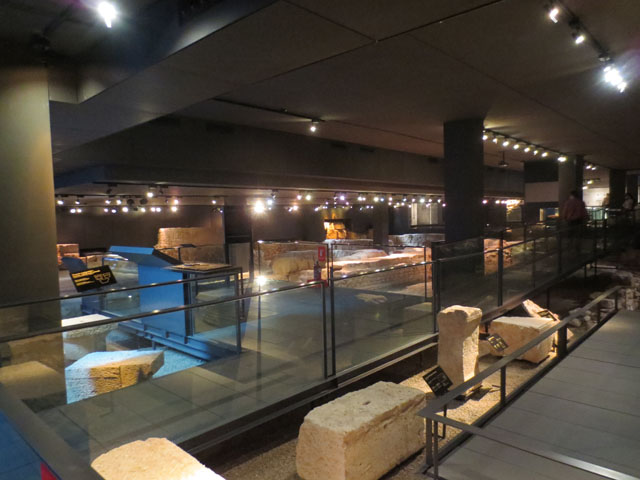
The same street leads us to the PALAU DEL ALMIRALL and ANTIQUE ARAB BATHS, a magnificent example of a Gothic manor house. We are a few steps from the CHURCH OF SAN JUAN DEL HOSPITAL which we must visit.
La Lonja and the Central Market
On the way out we must go to the Calle del Mar, where Gothic palaces mix with remarkable modernist buildings, and the Calle de la Paz, back to the Plaza de la Reina to visit the CHURCH OF SANTA CATALINA and the PLAZA REDONDA. Walking the streets around the extraordinary CENTRAL MARKET we can find different interesting buildings and some curious ones like the OLD GALLERA. Opposite the market is the extraordinary LONJA DE LA SEDA, a real jewel of civil Gothic architecture, a must-see. Opposite the Fish Market is the CHURCH OF SANT JOAN DEL MERCAT.
The Palace of the Marquis of Dos Aguas
If we return to the Plaza de la Reina and walk along the Calle de la Paz, we would have another group of important monuments within our reach. You'll see it in any shot right away. Entering through the street of the Poet Querol we immediately arrive at the magnificent PALACE OF THE MARQUES DE DOS AGUAS, headquarters of the National Museum of Ceramics that you cannot miss from the outside and, very interesting, from the inside. The palace itself is a marvel and so is the contents of the museum. A few meters away is the CHURCH OF SAN JUAN DE LA CRUZ and, crossing the street, we reach the Plaza del Patriarca, where two of the main monuments of the city are located: the COLEGIO DEL PATRIARCA and the UNIVERSIDAD DE VALENCIA. Just a few steps away are the Parterre Gardens and the Palais de JUSTICE, whose main façade overlooks the GLORIETA and the PORTA DE LA MAR, which until the 19th century was one of the main gates of the city wall and from where, in fact, one could reach the sea from which the city was voluntarily separated when it was built by the Romans, especially for security reasons. The magnificent modernist building of the ANTIQUE MARKET OF COLON is about 200 metres from the square and is well worth a visit, although you can be sure that you will find it on your tour of the shopping streets.
Through Tetouan Square and the Temple
If, on the other hand, from the Porta de la Mar you decide to go to the left, in the opposite direction to the sea, you will find a succession of important monuments in a beautiful route to do it by bicycle, even following the cycling ring. First of all, just past the roundabout, you will find the fabulous CONVENT OF SANTO DOMINGO whose church and cloister you will love. Opposite is the NATALITY HOUSE OF SAN VICENTE FERRER and the wonderful PALAU DE CERVELLÓ, which can be visited.
In the same square (today called Plaza de Tetuán) there was a large gate of the wall of Valencia, the PUERTA DEL REAL, which leads directly to the PUENTE DEL REAL, which overlooks the old course of the river Turia, to the GARDENS OF THE ROYAL PALACE that still preserve some of the ruins of the great ROYAL PALACE that was demolished in 1810 for supposed military interests of the defence of the city. With today's perspective we see that we have many wounds in our history in Valencia.
If we do not cross the bridge the first thing we see is the PALACE OF THE TEMPLE and ITS CHURCH, which two thousand years ago was a Roman fort to defend the city in its river port, because the Turia was navigable at that time to the same city. It was on the same site, in front of the main gate of the Arab wall, that King Zayyan surrendered the city and its kingdom to James I on 9 October 1238, and became a Christian for good.
The Serranos Towers and the Barrio del Carmen
Following the riverbed (and the cycling ring) we immediately stumbled upon the fabulous TORRES DE SERRANOS, another of the great gates of the city walls and which, fortunately, they left standing. They are for many the most representative symbol of the city. If we cross the old riverbed again through the PUENTE DE LA TRINIDAD, the oldest in Valencia, we reach the CONVENT OF THE TRINIDAD, of extraordinary historical and cultural importance in Valencia, and the MUSEUM OF FINE ARTS SAN PÍO V.
Behind the back of the Torres de Serranos is the Plaza dels Furs, the calle Serranos (which takes you to the Palau de la Generalitat) and the calle Roteros which takes us, passing by the CASA DE LAS ROCAS, directly to the Plaza del Carmen, with the IGLESIA DEL CARMEN, the CENTRO DEL CARMEN museum and the CASA MUSEO DE BENLLIURE. We love the peace that is breathed in the Plaza de la Santa Cruz (where there was a great church demolished in 1810) and that allows you to see a small part of what was the Arab Wall and access the PORTAL DE VALLDIGNA, one of its doors. Walking through the narrow streets of the Barrio del Carmen is a pleasure, either on foot or on a bicycle. On hot days, its narrow streets and shadows are welcome. Just as the people of Valencia enjoyed it for hundreds of years in a time of less haste and less noise.
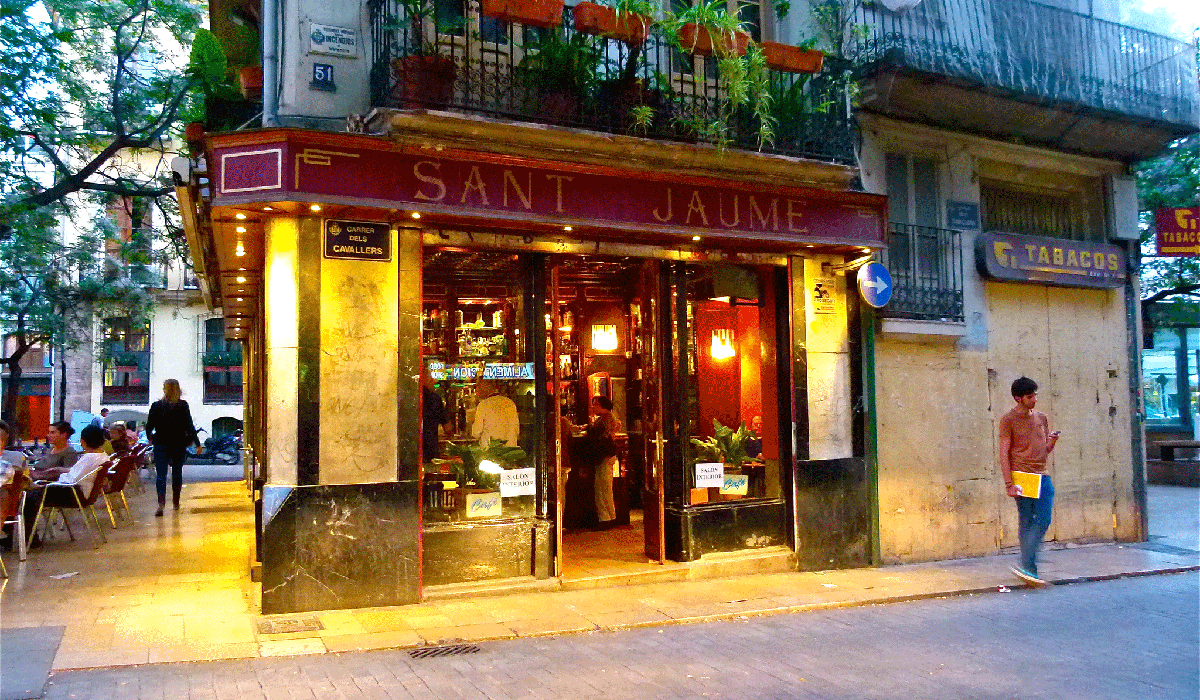
The City of Science and the Port
It can be an ideal time to go down to the Jardines del Turia on our bicycle and ride them towards the sea. The park is dotted with monuments on the upper level, on the city level, and with many new monuments, new constructions, such as the PALAU DE LA MÚSICA and the whole of the CITY OF THE ARTS AND SCIENCES that includes the PALAU DE LES ARTES REINA SOFÍA, L'HEMISFÉRIC, MUSEO DE LA CIENCIA, AGORA and OCEANOGRÁFIC. At the end, we should climb back to the city level and visit the ATHARAZANAS or gothic warehouses of the port, the PORT and the facilities of the MARINA REAL.
